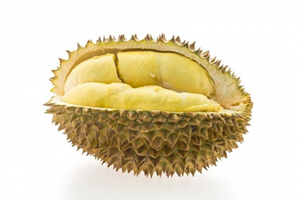Why Stockfish Is So Expensive
Narrator: Almost everyone at this market in Lagos, Nigeria, is here to buy stockfish. A coveted source of protein, it sells for $65 per kilogram, seven times as much as other popular fish, like croaker. But no one in Nigeria can actually produce this unique dried cod. The fish comes from thousands of miles away in Norway, where entire operations are dedicated to supplying the stockfish demand in Nigeria.
Nora Falch: It’s 99.9% for Nigeria.
Narrator: A full drying rack like this is worth over $500,000. But because the supply from Norway is volatile, prices fluctuate, and sellers here in Nigeria have no control over how much fish gets here. So, how did stockfish first connect these two economies? And why is it so expensive?
Owen Nana: We add our stockfish. The stockfish is very important to Nigerian cuisine because of the texture and flavor it gives to the dish, especially when you want to have that local smell, local aroma to your food.
Narrator: This is the fishing village of Henningsvær in Lofoten, Norway. It’s the ideal location for drying stockfish. Cod migrates here at the start of the winter. After it’s caught, the fish is graded by size and tied to be hung on racks, heads and bodies separately. The weather here is cold, dry, and reaches minus 10 to minus 15 degrees Celsius with windchill. It’s so cold that there are no insects that could eat the fish, but not cold enough to freeze the fish. And it dries the fish so much that after a few weeks, not even birds are interested in it anymore.
These racks have the capacity for as much as 4,000 metric tons of stockfish.
Nora Falch: It’s a way of conservation. The yield is 23%, so that means that we take out all the water. It’s a way of preserving the high proteins.
Narrator: Exposed in the freezing wind, it takes three months for cod to fully dry and become stockfish. Once that happens, stockfish can be stored for up to three years, making it an extremely valuable resource. This is a longer method than using salt or artificial dryers, which can dry cod in a week, but the long wait pays off.
Companies like Nora’s buy fresh cod for 52 kroner, a little less than $5, per kilogram from fishers. Once dried, its bulk price is around 150 kroner per kilogram. In Nigeria, it won’t be sold in kilograms, but in 30-kilogram bags.
Nora Falch: These heads, after two months, approximately, we can take it indoors after drying it, and we press it into 30-kilo jute bags and ship it in 40-foot containers. And it all goes to Nigeria, yes.
Narrator: Up until 60 years ago, the word “stockfish” meant little to nothing in Nigeria. But after the Nigerian Civil War killed more than a million people, mostly of starvation, in the late ’60s, everything changed. Among the emergency supplies other countries sent to Nigeria to combat the famine, Norway sent stockfish. While Norwegians still eat it in restaurants now, almost 100% of the stockfish produced in Norway is headed to Nigeria, especially for home cooking.
In 2015, Nigeria imported $8.94 million worth of stockfish from Norway.
Chinonso Nwachukwu: This is cod, from Norway. We don’t have challenges selling stockfish once we import it. And we sell as much as we bring.
Narrator: Nonso is a stockfish dealer. He’s spent 20 years in the business, going from retailing to dealing directly with imports. He sells his stockfish at the Otto White Sand Market in Lagos, Nigeria.
Chinonso Nwachukwu: Stockfish comes in different species. So there’s the head aspect of it, which is into three types. There’s one that comes with the jaw. There’s one that comes without the jaw. There’s also a type of different heads. The same way it is different, the prices are different. So there are two types of meat, the one without skin and the one with skin. Then, aside from that, there’s also the body, the long one. That also is more expensive. And even that body, there are up to four different types.
Narrator: The hot and humid climate makes it impossible for stockfish to be dried here, so importing it is the only option. The stockfish takes six weeks to get to Nonso from Norway.
Chinonso Nwachukwu: A bag of boy here is above $500 and above 3000,000 [naira] Then the main body, the long one, is up to 800,000 to 900,000 here, which is more close to $1,000 or above.
Narrator: But those prices will not be the same tomorrow. Prices fluctuate depending on the season, and because it’s a more convenient trade currency than Norwegian kroner, prices are set in US dollars. They depend on the naira-to-dollar exchange rates of the day. And even then, there are two different exchange rates: the official one set by the Central Bank of Nigeria and the black-market rate. Black-market rates, although unofficial, often give a better picture of the real market conditions.
Chinonso Nwachukwu: Most of us end up going for black market because you can be in the queue for dollars for months.
Narrator: In Nigeria, these two exchange rates are very different. Which one you pick to sell your stockfish can make or break a business like Nonso’s.
Chinonso Nwachukwu: There’s a major challenge in every business in this country: the restriction and access to dollars. The difference between government rates and the black markets is over 100. That’s a lot of money. So it makes the business difficult and also makes it expensive for the consumers. So it’s a very big challenge. But for now, we are dealing with it. We don’t have much option. We have to continue our business.
Narrator: In 2021, to encourage local fish farming, the Nigerian government added stockfish to a list of over 40 items that importers have to buy with actual US dollars, not naira converted into the same amount. For Nonso, this made trading stockfish even more challenging.
Chinonso Nwachukwu: 15 years ago, a container of stockfish could be around 7, 8 million naira. But today, a container of stockfish is worth between $75,000 and $80,000. In current black-market rate, that’s about 40-something million to 50 million. Because of the challenges of accessing forex [foreign exchange], through central bank, normal rates, there are people who have left the business.
Narrator: The rise in energy costs has also made the operations in Norway more expensive to run, and that also reflects on the final price at the market here.
Chinonso Nwachukwu: So now bring a method. Instead of allowing to be there to spoil, we start slashing. So when you move around the market, you’ll see people slashing the stockfish to a smaller size that people can afford.
Owen Nana: I really can’t place a time frame to how long I’ve been cooking stockfish. I grew up knowing stockfish. I learned to use stockfish also in cooking the local dishes, the local delicacies, especially our soups, our stews. Here is our seafood okra in all its beauty. How lovely it looks.
First of all, you feed with the eyes. The burst of flavors, the tastes, all combining to give this wonderful aroma.
Narrator: Back in Norway, the Nigerian market is too important to lose.
Nora Falch: And it’s funny because we have been trying to sell to other countries this product also. And every time we think we’ve found a new market, then we find out that it was really the Nigerians living in the Netherlands or England or the US. So it’s always the Nigerians who like this.















